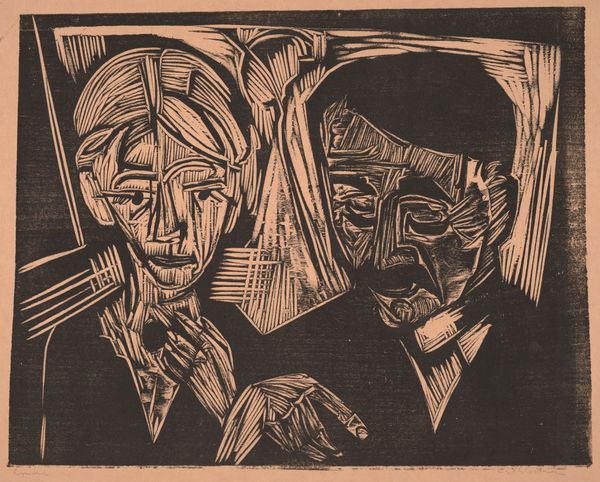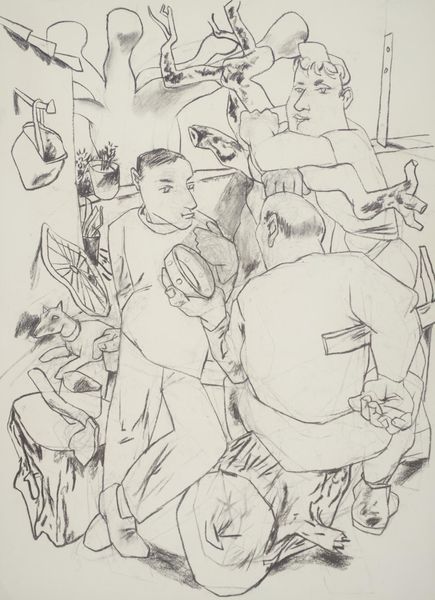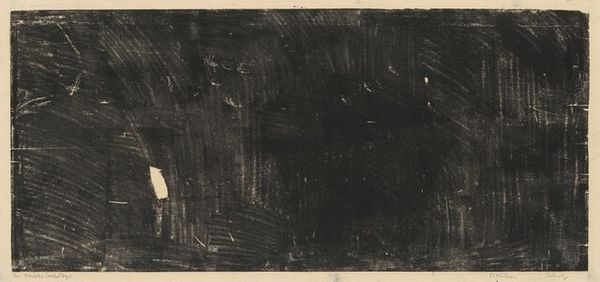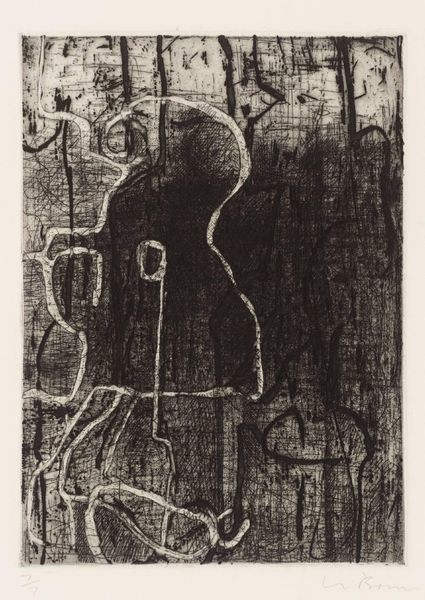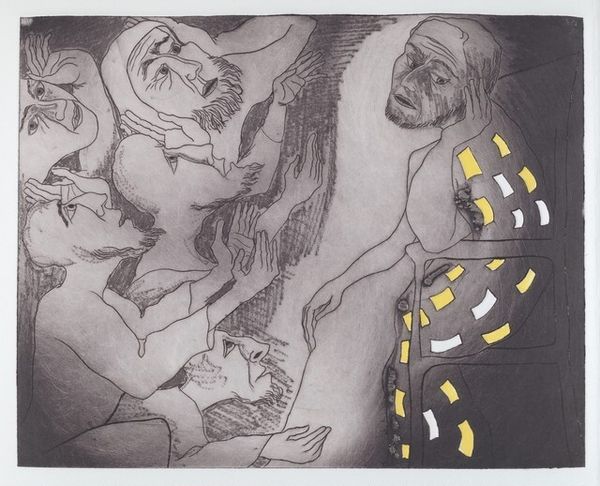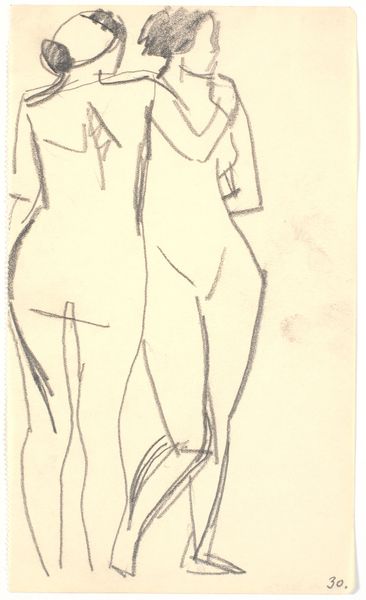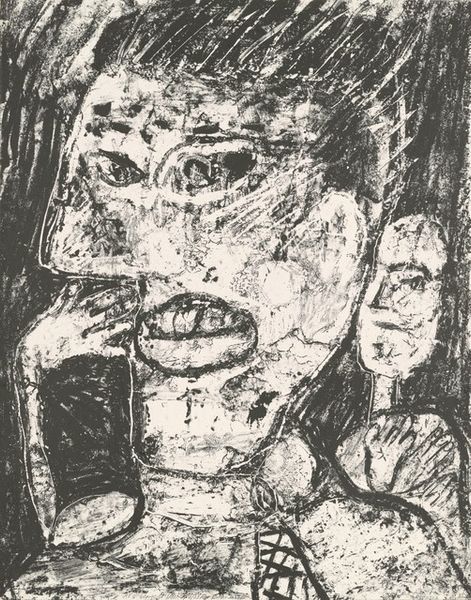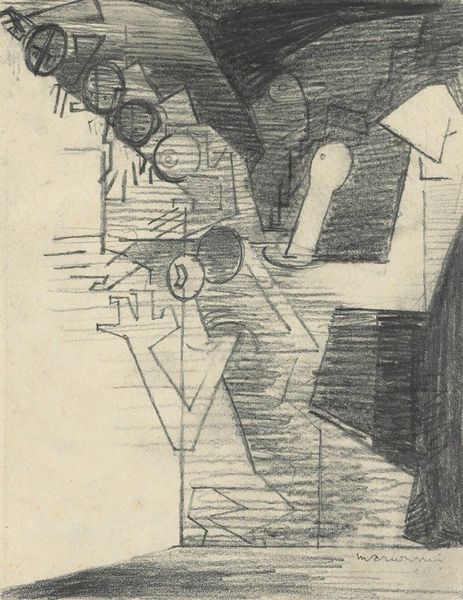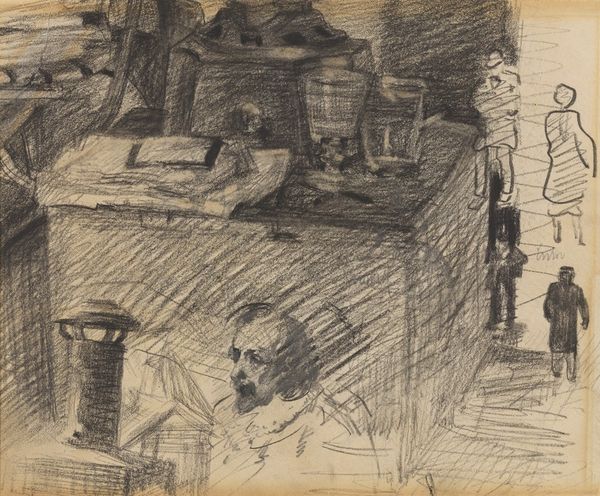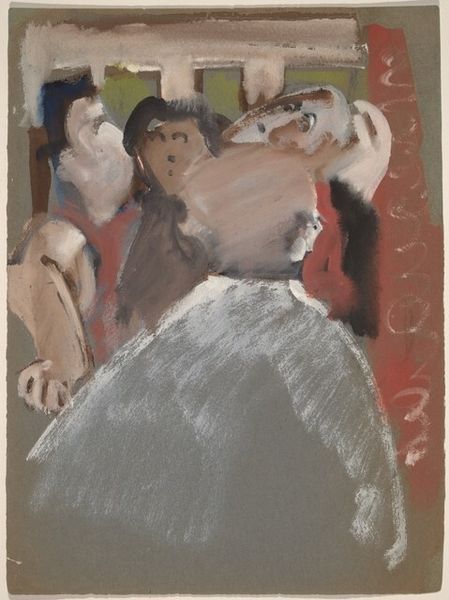
drawing, coloured-pencil, print
#
art-deco
#
drawing
#
coloured-pencil
# print
#
figuration
#
coloured pencil
#
genre-painting
Dimensions: image: 14 x 12 in. (35.6 x 30.5 cm) sheet: 18 x 15 in. (45.7 x 38.1 cm)
Copyright: Public Domain
Curator: Here we have Dayton Brandfield's "Front Row," a drawing from the period of 1935 to 1943. It's a color pencil print, and what strikes me is its depiction of a very specific kind of American social space, the movie theater, and its encoding of social mores of that time. Editor: You know, right off the bat, this makes me feel like I’m peeking into a time capsule. The colors, this dusky blue and sort of eerie green, create such a strangely familiar yet distant world. And the scale is so intimate! It's like a stolen glance, catching the fleeting moments of strangers. Curator: Precisely! The 'Front Row' is fascinating in how it situates the audience within the spectacle, or perhaps, questions whether the audience itself becomes the spectacle. Notice the segregation within the seating, perhaps gesturing to issues of class and race prevalent at the time, rendered through absence rather than direct depiction. It almost invites questions regarding whose gaze is prioritized here. Editor: And there's this undercurrent of… discomfort? Maybe it’s the strange lighting or how stiff everyone seems, but it's almost unnerving, like these figures are posed rather than naturally in their environment. There's something delightfully awkward and unresolved here that piques my curiosity! Curator: I think that "discomfort" speaks to a tension inherent to these spaces, where public and private intersect and often clash. The architecture too plays a role; that towering organ evokes a powerful and imposing institution looming over these figures. How does Brandfield implicate or exonerate this cultural apparatus in reproducing existing hierarchies? Editor: Absolutely. And isn't it wild how even a 'simple' movie night can be laden with such complexity? It definitely shows us that there's more than meets the eye in these everyday scenes! It's made me re-evaluate those kinds of interactions completely. Curator: Indeed. 'Front Row', far from a simple genre-scene, opens a powerful window onto questions of identity, representation, and social stratification, as potent today as they were when Brandfield conceived it. It compels us to critically consider who is included, excluded, and under whose terms such social dramas play out.
Comments
No comments
Be the first to comment and join the conversation on the ultimate creative platform.
